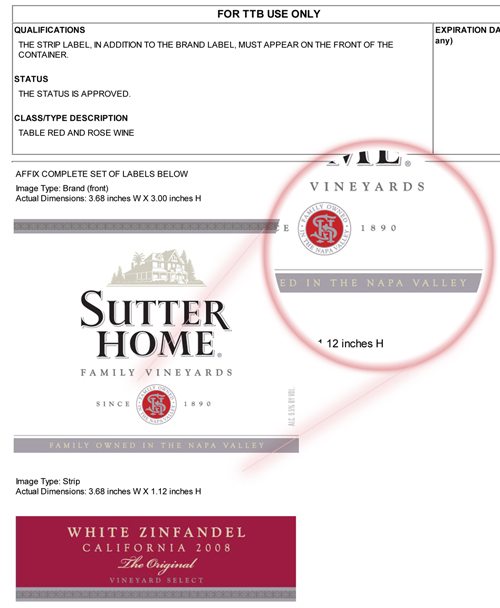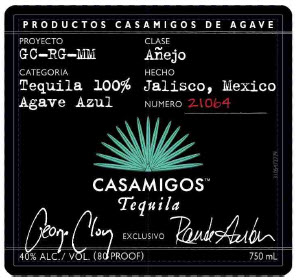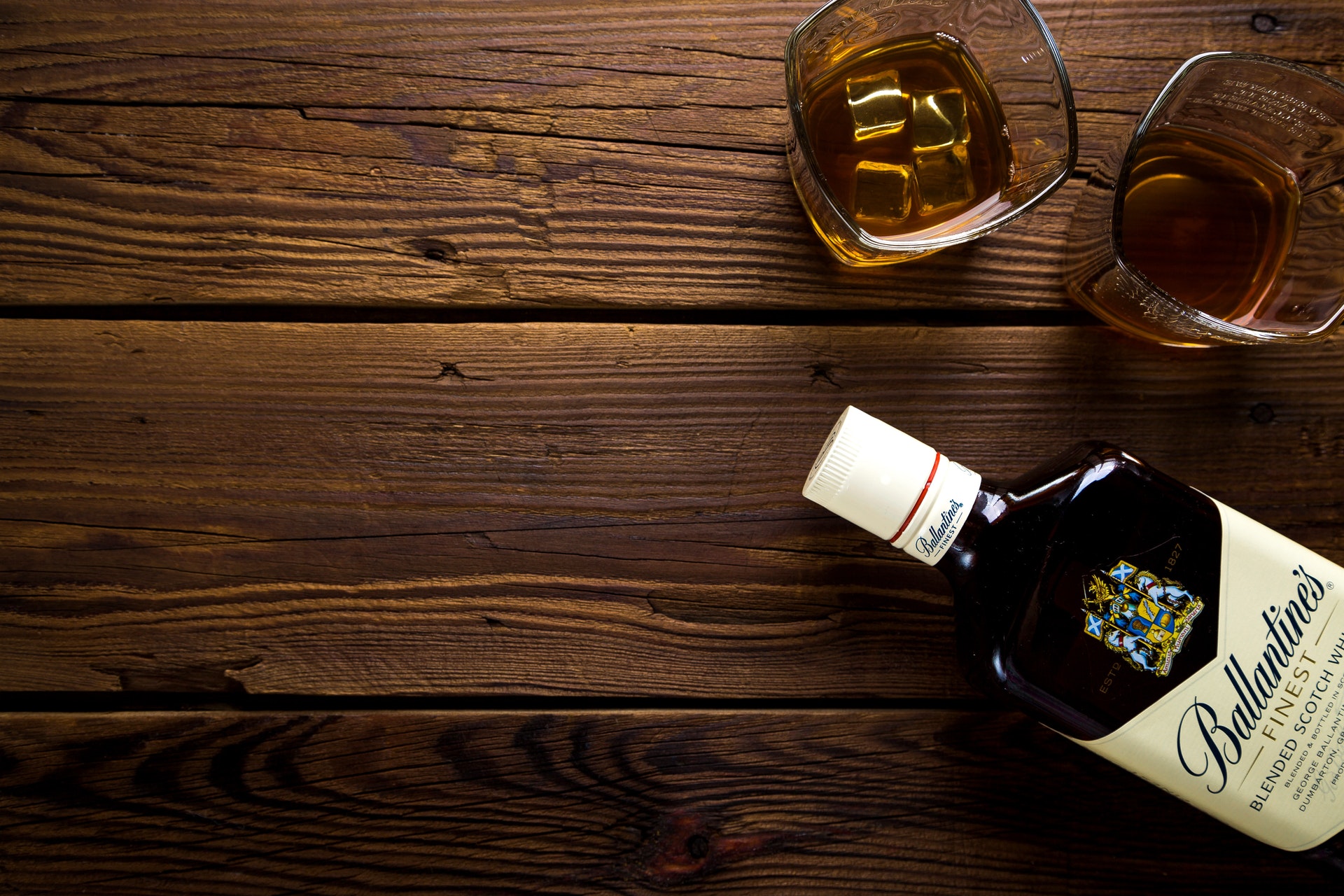This looks like a straightforward label, but it raises some good issues. “Napa” is on the “brand (front)” label. Should it be? On the one hand, it looks to be bottled in the Napa Valley. On the other hand, the appellation is California more broadly, as per box 14 of the label approval. The label mentions Napa three times, attesting to its obvious importance as a signal of quality. Each reference to Napa tends to be accompanied by a clarifying explanation. One says it’s bottled there, two say the brand’s ownership is there. None of them (explicitly or by omission) suggest the grapes were grown there. TTB has approved quite a few labels presenting the same issues, and they may show a shift in policy, compared to five or ten years ago. It is our understanding that some wineries were blocked from highlighting Napa, regardless of the location of the bottling winery, if the grapes were from elsewhere. The same label raises one more good (but rather technical) issue. The brand name and alcohol content statement are on one piece of paper. The varietal and appellation are on another. The rules require all four items to be on the brand label. Sometimes, TTB requires all four items on the same piece of paper, sometimes in the...
Continue Reading Leave a CommentVegetable Wine
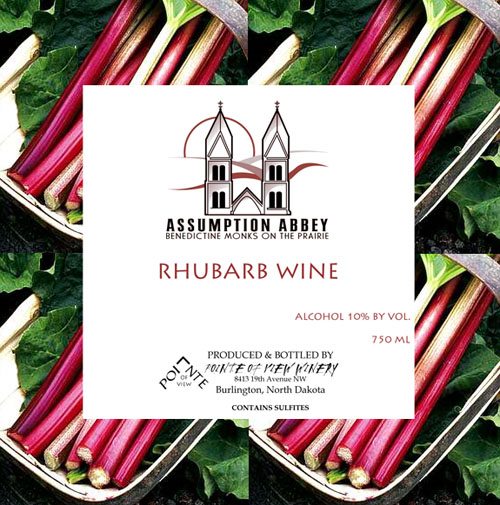
Earlier this week we covered kiwi wine. Today, we go further from grape wine, toward vegetable wine. Rhubarb wine to be exact. Rhubarbinfo.com says it’s a vegetable and on this I will tentatively defer to them. Assumption Abbey Rhubarb Wine is made by Pointe of View Winery in Burlington, North Dakota. The TTB database has many rhubarb wines, and they tend to be made in states not well known for grape wine, such as Kansas, Iowa, Illinois, and Indiana. None of these labels tend to show an appellation of origin or a vintage date. In a good article about non-grape wine, the San Francisco Chronicle explains:
[TTB] allows fruit wine makers to add sugar, acid and water as needed – natural flavors and colors are even allowed – but they don’t allow a fruit wine to bear a vintage or place-name the way a grape wine does.
“I think it’s a waste to not allow vintage dating,” says Koehler. “You have good and bad years for fruit, just like you do for grapes.”
Continue Reading Leave a CommentThose laws aren’t likely to change, if only because of the effort required by the TTB to police them. What does vintage mean to Tedeschi Vineyards when pineapple is available year-round? What does place-name mean...
Tags: ingredients, policy
Kiwi Wine
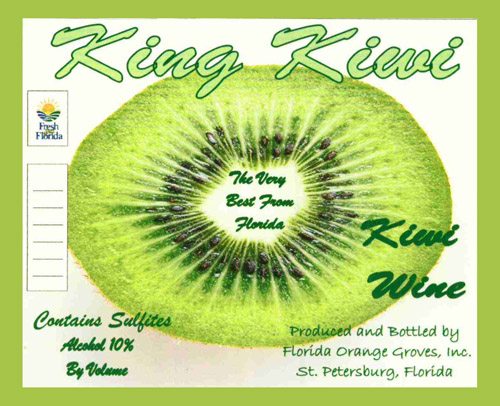
So far, I see 78 references to wine here, but only three references to fruit wine. So today, I endeavor to correct that imbalance. The imbalance is not due to any shortage of wines made from other than grapes. There are plenty. Today I will show a couple of wines made from the kiwi fruit. Above is King Kiwi, Kiwi Wine, made in Florida. A second producer of kiwi wines is Shalom Orchard, in Franklin, Maine. Wiki explains that kiwi has also been know as chinese gooseberry, macaque peach, macaque pear, kiwifruit and melonette over the past century. In the 1950s, big growers pushed the name toward kiwi and away from chinese gooseberry. The latter raised issues during the Cold War. And:
An American importer … complained that melonettes was as bad as Chinese gooseberry because melons and berries were both subject to high import tarriffs, and instead asked for a short Maori name that quickly connoted New Zealand.
One company and brand dominates the worldwide kiwi trade; Zespri ships 2 billion kiwifruits to 70 countries worldwide, from New Zealand.
Continue Reading Leave a CommentTags: ingredients
Milk from Dragons, Grapes and Devils
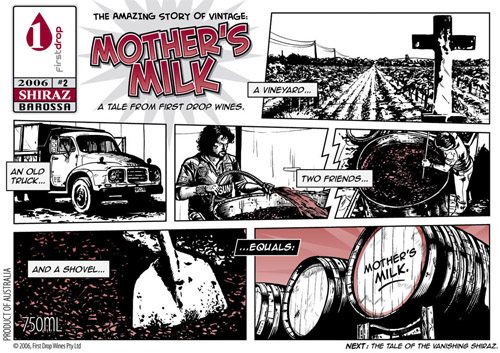
In many areas, TTB is fairly literal-minded. For example, if you are bound and determined to mention energy on your label, you are unlikely to get very far, without much regard to context, as in this example. Likewise, good luck if you want to use the term “organic” on anything not in line with the organic rules. In other areas, though, TTB will view a term much less literally. Mother’s Milk Shiraz is one such example. As best I can tell, it contains no milk. There is a recognition that the term is not to be taken seriously, even though it is quite possible to make a wide variety of alcohol beverages with and from real milk. This vodka distilled from milk is but one example. If you gave up Mother’s Milk before third grade, you may prefer Dragon’s Milk. Another alternative is Devil’s Milk. Even without ingredient labeling I am reasonably sure that the Devil contributed no milk whatsoever to DuClaw’s ale.
Continue Reading Leave a CommentTags: organic/vegan/green, policy, sin, wholesome
Rejection: Refreshing
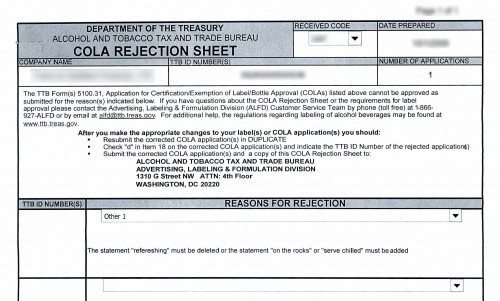
Quite a few readers have said, “yeah, unusual approvals are great, but what about rejections?” Here we have the first post of many, from time to time, showing common or revealing label rejections. First, some ground rules. We will not show the brand or company at issue. TTB tends to treat label rejections as confidential and approvals as public, and we’ll mirror this sensible policy. To this end, we may blur out some identifying information where necessary, such as above. In rare cases, we’ll change a little bit of text (in the example above we changed about three letters to avoid the distraction that might otherwise be caused by typos; we did not change the substance). If you have a good and interesting rejection, please let us know and we’ll make sure to treat it in line with the policy above. On to the controversial term at hand. For many decades, TTB has been concerned about the term “refreshing,” so common on all manner of beverages. TTB’s concern seems to be that it’s awfully close to a therapeutic claim, suggesting an effect on your body. “Invigorating” or “stimulating” would go a bit further and probably raise the same issues. Rather than ban the term “refreshing” outright — which would seem a bit out of proportion to the...
Continue Reading Leave a CommentTags: policy, rejections
